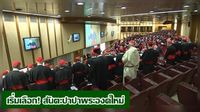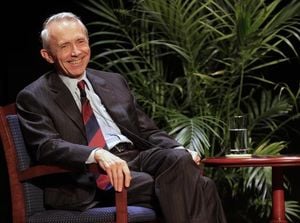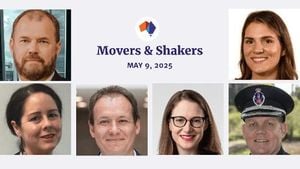On May 7, 2025, the Roman Catholic Church will witness a pivotal event as the College of Cardinals gathers in Vatican City to initiate the "Conclave," the election of the new Pope, marking the 276th pontiff. The solemn proceedings will commence with a Mass at St. Peter's Basilica at 10:00 AM local time (3:00 PM Thailand time), setting the stage for a significant moment in the church's history.
Following the Mass, at approximately 4:15 PM local time (9:15 PM Thailand time), the 133 eligible cardinals from 70 countries will proceed to the Sistine Chapel, where they will engage in a secretive assembly to deliberate and cast their votes. This gathering is steeped in tradition, with the term "Conclave" derived from the Latin phrase "con clavis," meaning "with a key," symbolizing the confinement of the cardinals to ensure the confidentiality of the election process.
Among the cardinals, two prominent figures have emerged as potential frontrunners: Cardinal Pietro Parolin from Italy and Cardinal Luis Antonio Tagle from the Philippines. However, there is no clear favorite as the cardinals prepare to vote. Cardinal Tarcisio Isao Kikuchi from Japan has indicated that the 23 Asian cardinals plan to vote as a bloc, contrasting with the 53 European cardinals who are known for their individual voting preferences.
The election process is expected to be rigorous and may last several days. Historically, the selection of a Pope has rarely concluded on the first day of voting. According to reports, it is anticipated that the cardinals will cast votes only once on the first day, with subsequent votes limited to four per day. A candidate must secure at least two-thirds of the votes to be elected, and if no decision is reached after 33 rounds, the election will narrow down to the two candidates with the highest support.
In the past ten conclaves, the average duration for electing a Pope has been around three days, with none exceeding five days. The last conclave in 2013 concluded in just two days. If the cardinals successfully elect a new Pope, a white smoke signal will be released from the Sistine Chapel, accompanied by the ringing of bells to inform the public. Conversely, if no decision is made, black smoke will indicate that the election remains unresolved.
The first day of the conclave will begin with the Mass "Pro Eligendo Pontifice," which translates to "for the election of the Pope." This solemn ceremony is intended to invoke spiritual guidance for the cardinals as they embark on the momentous task of selecting the new leader of the Catholic Church. During the Mass, the head of the College of Cardinals will lead the prayers, seeking divine assistance in the decision-making process.
After the Mass, the cardinals will gather in the Sistine Chapel for a series of prayers, including the invocation of the Holy Spirit with the hymn "Veni Creator Spiritus." This is a moment of reflection and unity before they officially enter the voting phase. A significant proclamation, "Extra omnes!" will be made, signaling that all unauthorized individuals must leave the chapel, ensuring that the election remains private and protected from outside influence.
Voting will begin on the first day, but only one round will be held initially. The cardinals will retire to the "Domus Sanctae Marthae," or St. Martha's House, which will serve as their residence throughout the conclave. Starting on the second day, they will have the opportunity to vote up to four times daily. Each cardinal will receive a ballot with the phrase "Eligo in Summum Pontificem" (I elect as Supreme Pontiff) to write down their chosen candidate's name. They will then approach the altar, take an oath, and deposit their ballot into a designated container.
The results of each voting round must achieve a two-thirds majority from the eligible cardinals. If a candidate fails to meet this threshold, the process will continue with additional rounds. After each round of voting, the ballots will be burned, releasing smoke from the chapel's chimney. If the election remains undecided, black smoke will emerge, indicating that no Pope has been elected yet.
Should the conclave extend beyond four days without a decision, there will be a pause on the fifth day to allow the cardinals time for informal discussions and reflections before resuming the voting process. The conclaves held in 2005 and 2013 were notably efficient, concluding in just two days.
Once a new Pope is elected, he will enter the "Room of Tears," where he will don the white vestments symbolizing his new role. Following this, the senior cardinal will emerge onto the balcony of St. Peter's Basilica to announce to the world, "Annuntio vobis gaudium magnum; Habemus Papam!" which translates to "I announce to you a great joy; We have a Pope!" The new Pope will then make his first public appearance, offering blessings to Christians around the globe.
As the world watches, the election of the new Pope signifies a critical moment not only for the Catholic Church but also for millions of followers worldwide. The conclave represents a blend of tradition, faith, and the hope for a leader who will guide the church through contemporary challenges while upholding its core values. With the eyes of the world upon them, the cardinals are tasked with making a decision that will resonate through the ages.





